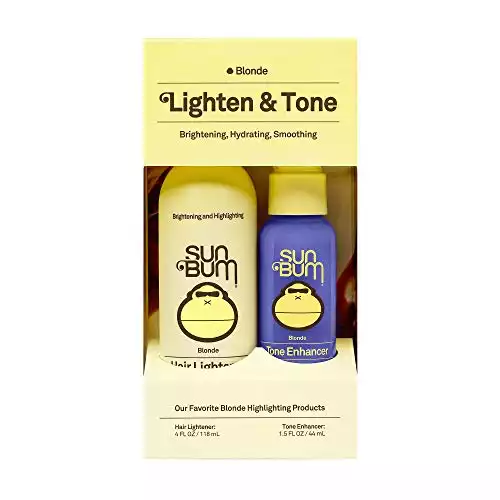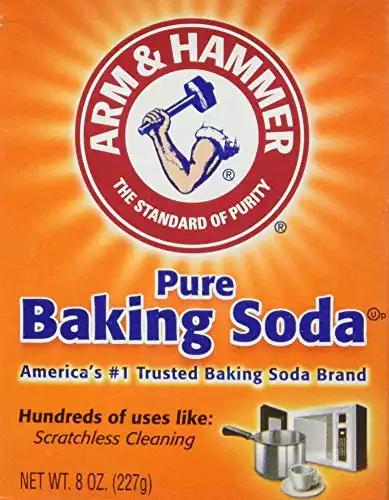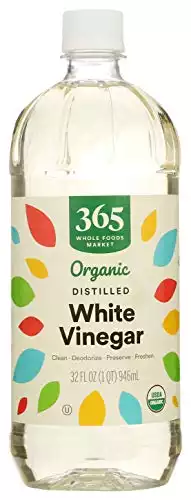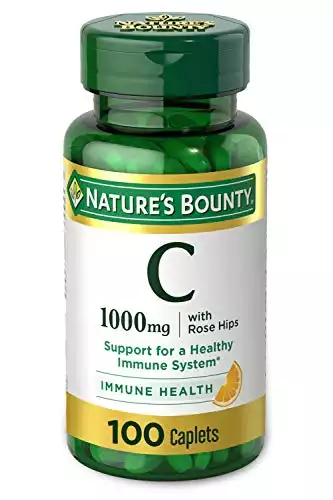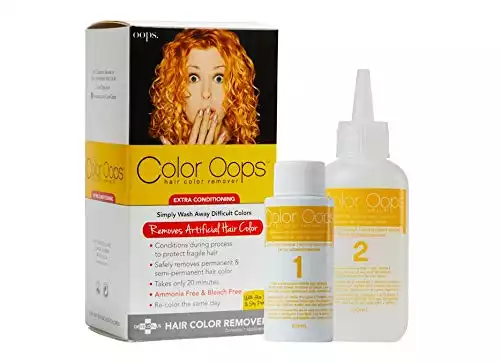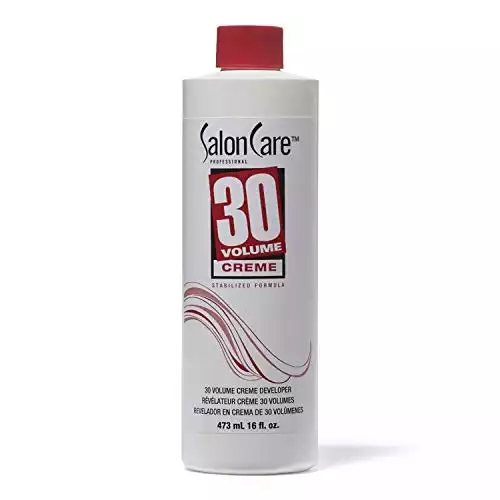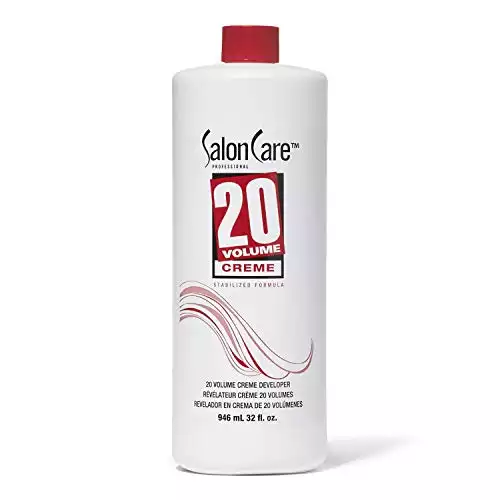Jump to:
If your recent dye job ended up too dark for your liking, you have a few options to lift the color a few shades at home. Read on to learn how to lighten dyed hair with a few methods that don’t require a salon visit.
How to Lighten Dyed Hair: A Complete Guide
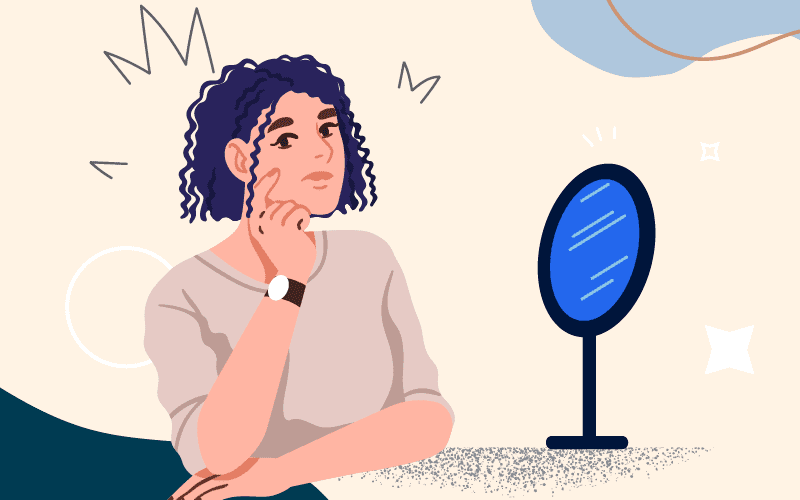
Maybe you took a risk, dyed your hair at home, and ended up hating the too-dark results. Maybe you asked your stylist for a specific color, but it came out darker than you’d like.
Perhaps you want to refresh the darker color you loved at first by lightening it up.
If you want to lift your color a few shades to make it look more appealing on you, you’re in luck. We know exactly how to lighten dyed hair at home, and we’re going to share all the tips and tricks with you here.
You’re not in a desperate position here. You have options! We’ve got a few methods that will lighten dyed hair without leaving your locks a damaged, mushy mess.
In fact, you probably already have the ingredients for some of the natural methods at home! And if you’d prefer salon-grade remedies to lighten your hair, we’ve got you covered, boo.
We’ll talk about the ways you can lighten your recent dye job at home to get salon-quality results you’re going to love. Let’s lighten up already!
How to Lighten Dyed Hair 6 Ways
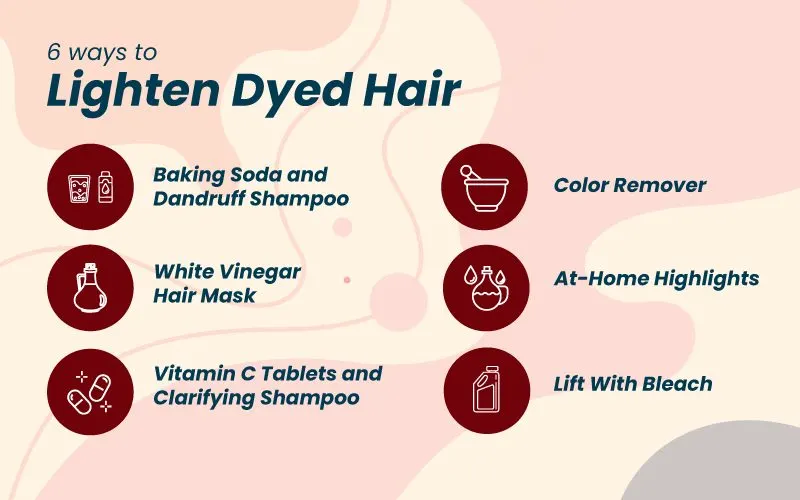
The first choice you need to make is whether you’ll use natural or chemical means to lighten your hair dye. There are pros and cons for each.
Natural methods are great because they’re less likely to damage your hair, produce less drastic results, and use cheap ingredients that many people already have lying around the house.
But natural methods aren’t as effective as salon-grade lightening techniques and may not lighten your hair as much as you want.
Chemical methods typically used in salons are the most effective and give you more control over the finished result. But they require more know-how than natural methods, are more expensive to buy, and have more potential to permanently damage your hair.
We’d recommend starting with a natural method to see how much it lightens your color. Then, if you haven’t seen the kind of results you want, you can opt for a salon-grade method (or – hear me out – just book an appointment with your stylist to get the color fixed).
We’ll look at those easy, cheap natural methods first. Then we’ll show you the methods professionals use to lighten hair dye.
Warning: Whenever you lighten hair, it always pulls red. This is due to the natural stages of lightening that dark hair has to go through to achieve a lighter shade. If you plan to lift your hair even 1 or 2 shades, plan for some additional red in your hair. If you want to lift any more than that, you may even end up with an orange or brassy hue. Keep in mind that the more you lift, the more unnatural your hair may start to look, making it necessary to use a toner.
The Natural Methods
The natural methods use common household ingredients and chemicals to achieve a lighter shade when you’ve dyed your hair too dark. There are dozens of natural lightening methods, but a few are more effective than others.
We’ve chosen the best methods to list here with step-by-step instructions for each. Read through to find the method you want to try. Your hair will be lighter in no time, and you’ll have fun mixing up some strange concoctions with common household products!
1. Baking Soda and Dandruff Shampoo Slurry
Baking soda alone has the properties to lighten hair dye, but when you combine it with medicated dandruff shampoo, it becomes a stronger at-home lightener.
Baking soda combined with selenium sulfide, the active ingredient in some dandruff shampoos, is a great way to naturally lighten hair dye.
In fact, stylists recommend against using dandruff shampoo after getting your hair colored because it causes the color to fade. Luckily for you, that’s exactly what you want!
- Squirt out enough dandruff shampoo to fully coat your hair.
- Mix enough baking soda into the shampoo so you have a thick paste.
- Apply the paste to your wet or damp hair and leave it on for up to 5 minutes. You can use a shower cap to keep everything contained and sealed in.
- Thoroughly rinse the paste out of your hair. You’ll feel tons of small, gritty bits throughout your hair – that’s the baking soda. It’s harder to wash out, so expect to spend longer than usual rinsing this concoction out. Make sure it’s completely rinsed!
- Repeat the process later in the day or the next day to see more noticeable results. You may be able to lift your color a shade or two with this method.
Make sure to follow any type of baking soda usage with a good hair mask or deep conditioning treatment. Baking soda’s pH (8) is much higher than your hair and scalp’s (5.5), so it can be really disruptive and leave your hair feeling damaged or straw-like with too much use.
2. White Vinegar Hair Mask
Baking soda is an alkaline base, so on the opposite end of the pH scale, we’ve got acidic substances like vinegar. This low-pH option may be safer on strands than baking soda and proves to be similarly effective.
Vinegar’s acidic properties help it slip under the outermost cuticle layer of your hair to loosen the bonds holding that dark dye to your strands. When you use vinegar on dyed hair, it will oxidize and fade the color. Each time you use it, it fades the color a little more.
This gives you some level of control over how much you lighten your hair dye. To lighten dyed hair with vinegar, you combine it with water and apply it to your hair as a hair mask. You’ll allow it to sit on your hair for a while before rinsing it out to check the results.
White distilled vinegar (5% acetic acid) is cheap, easy to find, and you might already have some on hand. You can substitute another type of vinegar if needed.
- Mix one part white vinegar with one part hot water in a container you can easily pour from. Make sure there’s enough to coat your hair completely.
- Pour the vinegar and water over your hair to saturate it fully.
- Cover your hair with a shower cap and set a timer for 15 to 20 minutes.
- Rinse the vinegar mask out completely. You can follow up with a clarifying shampoo if you notice a lingering vinegar smell. It should fade as your hair dries.
- Repeat the process the next day to get more significant lightening results.
You can use this vinegar mask for a few days in a row to get the maximum results. Using a clarifying shampoo afterward can boost the lightening power, but it will leave your hair stripped of natural oils and very dry.
Follow up with a deep conditioner or moisturizing hair mask to keep your tresses soft and healthy while you work on lightening the color up.
3. Vitamin C Tablets and Clarifying Shampoo
Another popular method for lightening dyed hair at home is using crushed vitamin C tablets and clarifying shampoo. Vitamin C, like vinegar, is an acidic substance that can slip under your hair’s outermost cuticle layer to start “scrubbing” dark dye away.
The result is a lighter shade of your original dyed color. When you combine the acidic properties of vitamin C with the cleansing, buildup-busting power of clarifying shampoo, it’s even more effective at lightening hair dye.
Plus, any vitamin C that gets absorbed through your scalp and strands has hair health-boosting benefits! It’s involved in collagen production, a major component of your hair’s strength and health.
Vitamin C is also an antioxidant that eliminates free radicals that lead to both oxidative damage and hair loss. Vitamin C is also antibacterial to keep your scalp clean and free from infections.
- Crush 10 vitamin C tablets into a fine powder. You can use two spoons nested together, a pill crusher, or a mortar and pestle to finely crush the tablets.
- Mix the crushed tablets into enough clarifying shampoo to fully coat and saturate your hair.
- Apply the paste to damp hair (this allows it to better adhere to strands) and set a timer for anywhere from 30 minutes to 60 minutes. The lighter you want your color, the longer you should leave it on.
- Thoroughly rinse the paste out of your hair and follow up with conditioner to replenish some of the lost moisture.
- Repeat the next day as needed to continue to fade the dye to a lighter color.
Remember that vitamin C is acidic, and clarifying shampoo can be drying to hair. So if you plan to use this method over a few days, be ready to provide your hair with much-needed moisture and hydration to keep it from becoming brittle and straw-like.
Some other household ingredients you can successfully use to lighten your hair include dish soap, chlorinated water in swimming pools and spas, and lemon juice.
- You can use dish soap like you would a clarifying shampoo to lighten hair dye, but be sure to deep condition afterward. It’s super drying to hair because it strips all-natural oils away.
- Lemon juice can lighten hair dye because it’s acidic, but vitamin C tablets are stronger.
- Chlorinated water can fade hair color, but it won’t give results as quickly as the other options we’ve listed. Plus, it can damage your hair over time. We recommend trying other methods instead.
The Professional Methods
If you’d rather put on your stylist cap and try a professional method instead, it’s important to know what you’re getting yourself into. Professional methods involve using powerful chemicals that can permanently damage your hair.
You have to get everything right – the product selection, the application, the timing, etc. – to have success using salon-grade remedies.
But if you do it right, you can save yourself some cash and lighten your strands to the perfect shade without stepping foot in a salon. If you’re up for the challenge, feel free to give one of these methods a try.
4. Color Remover
You should only use this method if you plan to re-dye your hair a different shade after you remove the too-dark dye. Using a color remover doesn’t just lighten hair dye. It removes it.
So you won’t get a shade that is 1-2 levels lighter than your current shade when you use a color eraser. You just remove the color so you can try again. Please keep in mind that color removers won’t work on permanent hair color or henna dyes.
If that’s alright with you, just pick up a salon-grade color eraser like Color Oops (around $15 on Amazon) and follow these directions.
- Apply the color remover to your hair, saturating every strand like you would when applying hair color.
- Let the color remover sit on your hair for the time recommended on the box or bottle – usually about 15 to 20 minutes.
- Thoroughly rinse the color remover from your hair and follow up with shampoo.
- Check the results by blow-drying a small section of your hair.
You’re likely to see a strange hair color after removing the dark dye, so you’ll need to finish the process by coloring your hair again. After using a color remover, always choose a dye that is 1 or 2 shades lighter than you actually want.
Once you apply a color to hair that has been stripped of dye, it usually comes out a little darker. By choosing a lighter color, you can correct for this and get the shade you actually want.
5. At-Home Highlights
This is one of our favorite professional tricks – get highlights to brighten a too-dark hair color. It cuts down on the amount of damage your hair sustains because only small strands are lightened instead of bleaching your entire head.
Plus, it’s a little easier for novices to do than trying to evenly lift all of your hair to the right shade with bleach. We recommend avoiding 40 volume developers to lift your highlights because it’s much more damaging to hair.
This highlighting kit uses a 30 volume developer that can lift dark hair up to 7 levels.
So if you’re starting out dark brown with a level 3 or 4, you could potentially lift your highlights all the way up to level 10, which is the lightest blonde. Your step-by-step process will be different depending on the way you decide to highlight your hair.
If you choose to use a cap highlighting kit like the one above (definitely the easiest option), you’ll follow these general directions.
- Start with dry, clean, detangled hair. Put on the included gloves and mix the developer and bleach powder together in the mixing tray provided with your kit.
- Firmly put the highlighting cap on your head and secure it with the tie under your chin. Make note of where you’d like your highlights to be. For an overall brightening effect, try placing highlights around your face, down your part, and at the crown.
- Use the included hook to gently pull small strands of hair out through the small perforated holes in the cap. Start with very small amounts – the larger pieces you pull, the thicker your highlights will be.
- Apply the bleach/developer mixture to only the hair you’ve pulled through the cap. Saturate the hair evenly and completely.
- Put a plastic shower cap on your head and set a timer for 10 minutes. When the time’s up, check a strand to see if it’s lifted as much as you want. Leave for another 10 minutes before checking again. Don’t exceed 1 hour total.
- Rinse the highlighted hair with water, then remove the cap and shampoo your hair. Follow up with conditioner and blow dry to see your results.
6. Lift the Color With Hair Bleach
Your final option to lighten dyed hair is to use a powerful chemical lifting agent like hair bleach to lighten your hair color all over. Powdered hair bleach, ammonia, peroxide, and other chemicals are strong enough to remove dye from your hair and lift color several shades.
Once you’ve used a lifter like hair bleach, you’ll have very light-colored hair that you can then re-dye.
This is the scary one.
We’ve seen (and lived through!) enough at-home bleaching horror stories to be put off the stuff for good. But if you’re uniquely confident in your cosmetology skills, you can give it a try – just don’t say we didn’t warn you!
Seriously, if you’re so fed up with your color that you’re ready to bleach it all and start over, please. Just call a professional and let them do it right. Bleaching at home rarely goes well.
Even if it turns out looking alright, you could still cause permanent damage to your hair. The steps are similar to highlighting at home.
You’ll mix your bleach powder with a developer (20, 30, or 40 volume for lightening), apply the mixture to your hair to the point of saturation, and wait for it to lift.
Here are a few pointers for bleaching your hair at home.
- Pick the right developer. 20 volume can lift your hair color 1 or 2 levels and causes the least amount of damage to hair, 30 volume can lift 2-3 levels but damages the hair a bit more, and 40 volume developer can lift hair by 4 levels but causes the most hair damage. We recommend avoiding 40 volume developer at home.
- Fully saturate your hair. A common mistake with bleaching at home is being stingy during application. Make sure you mix up enough lightener to fully saturate every strand. Uneven saturation results in spotty areas and allows areas with thinner application to dry too quickly to properly lift.
- Avoid applying product to the scalp. Also, make sure you apply the bleach to the hair only, beginning about 1/4″ from the scalp. Never put hair bleach on the scalp. The extra heat from your scalp will accelerate processing, leaving you with neon roots. It is also unsafe to use strong developers on the scalp, as it can cause a chemical burn.
- Keep checking your progress. Don’t just set the timer and rinse when it goes off. Stay informed about your hair’s lift progress by checking it every few minutes. This ensures you don’t over-process your hair once it’s lifted to your desired level and keeps you from removing the bleach before your hair has lifted.
- Wait before dying your hair. After you’ve successfully bleached your hair to make it uniformly light, you should wait to dye your hair if you can. Even giving your strands a day or two to rest before dying will be beneficial.
- Follow up with a deep conditioning treatment. Bleaching physically damages strands and can make them feel brittle and dry. Using a deep conditioning treatment afterward helps restore moisture and keep your hair feeling soft.
So, How Do You Lighten Dyed Hair?
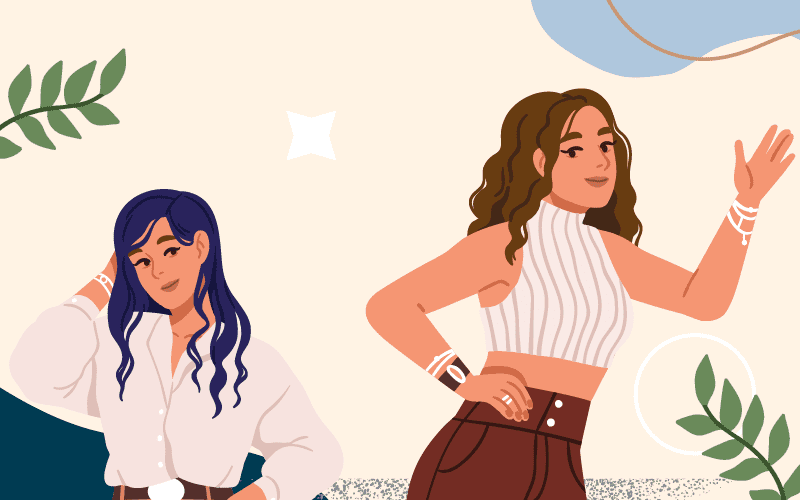
Whether you choose natural methods using common household ingredients or opt for the same methods the pros use, it’s definitely possible to lighten dyed hair at home.
The wide range of chemicals and products that can lighten and fade hair color includes baking soda and dandruff shampoo to color remover and bleach. The most important thing is that you choose a method you’re 100% comfortable with.
This isn’t the time to see if you’ve got what it takes to be a professional colorist. If you’ve never used bleach or color remover before, this is your sign to stop what you’re doing and call your stylist.
If you don’t have a stylist, or if your stylist is the one who saddled you with this too-dark color, learn tips and tricks for finding one with our hair highlights cost guide.

